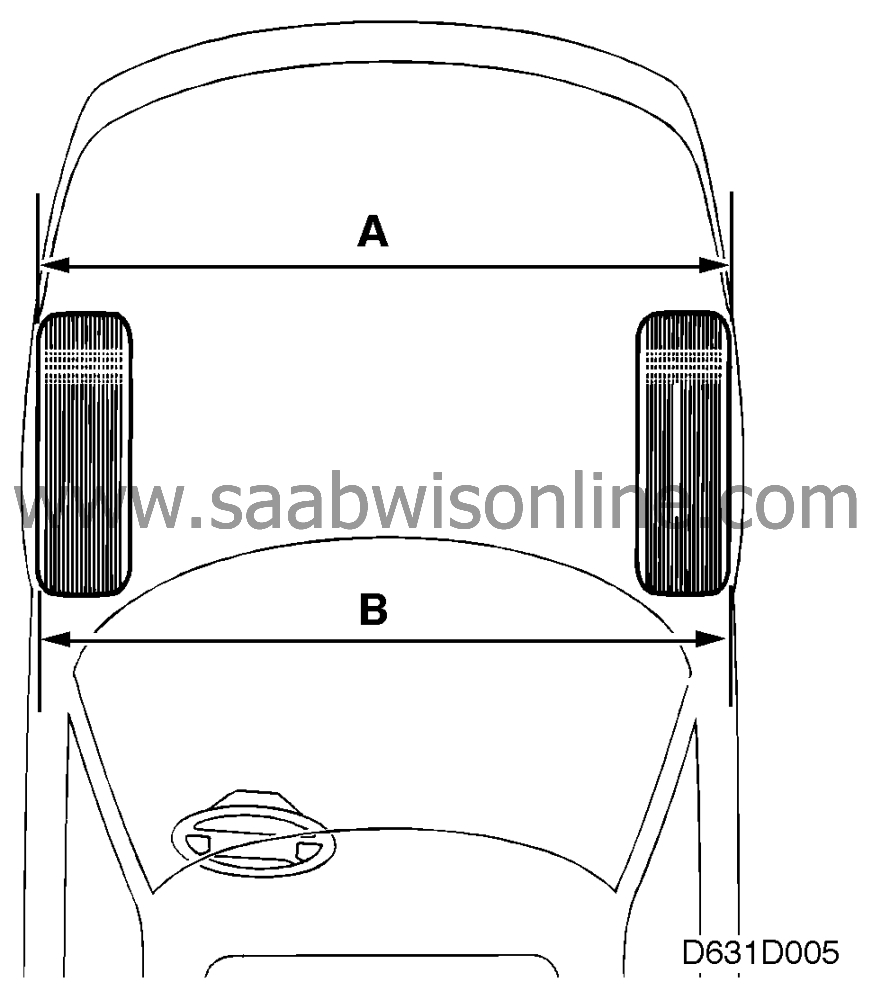Wheel geometry
| Wheel geometry |
| Toe-in |
The toe-in value is the difference between A and B. Toe-in is 0 if the wheels are parallel and both measurements are equal.
Toe-in must always be positive, i.e. dimension B must be greater than dimension A.
B minus A = positive value.
Toe-in must be adjusted by an equal amount on both left-hand and right-hand track rods to ensure that the steering wheel spokes will be positioned symmetrically.
| Camber |
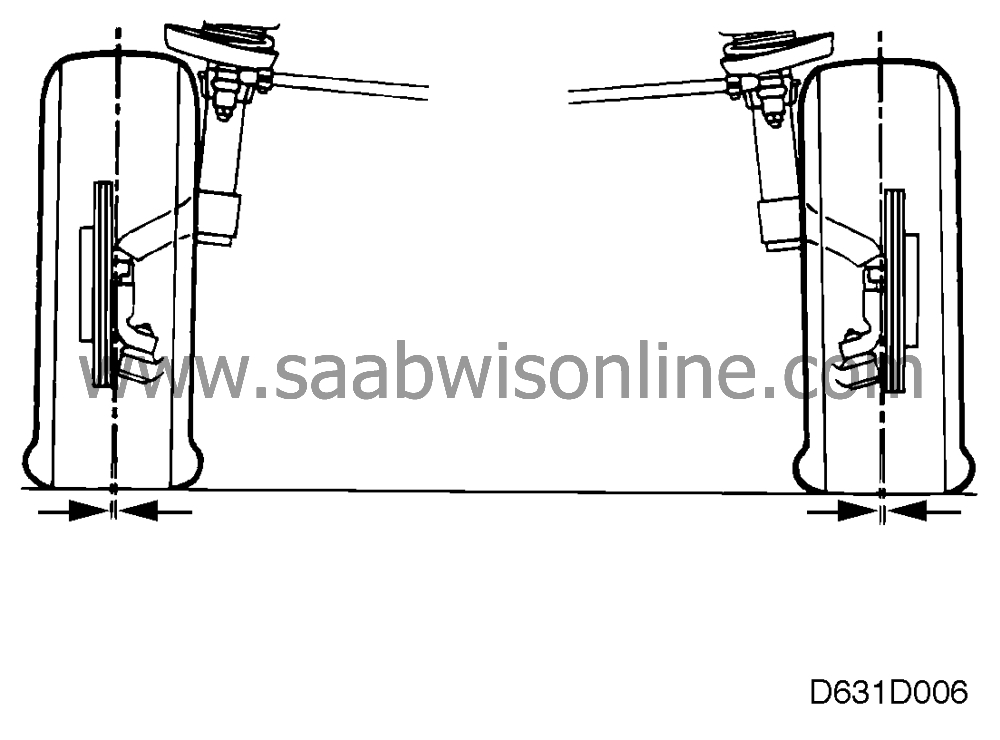
Camber refers to the angle formed between the wheel and the vertical.
If the wheel leans outwards, the camber angle is said to be positive(+); if it leans inwards, the angle is said to be negative (-). Wheel camber on the Saab 900 is negative.
| Caster |
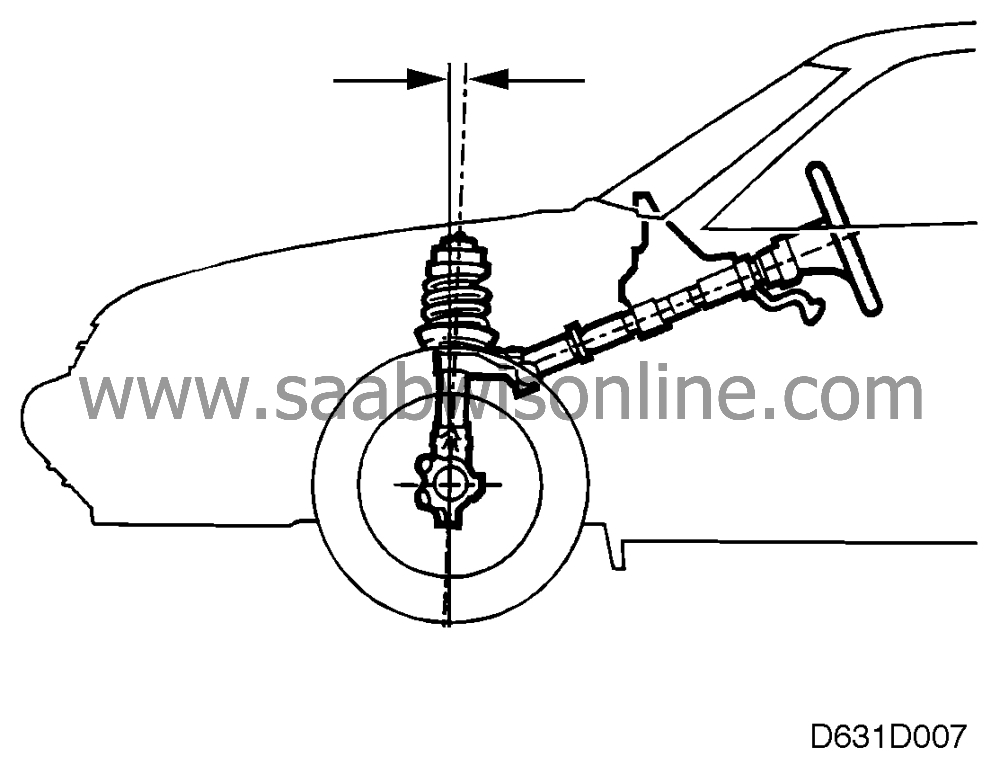
Caster is the angle at which the swivel pin (king pin) deviates from the vertical when viewed from the side and is given in degrees.
When the swivel axis is inclined rearwards, as shown, castor is said to be positive (+); when inclined forwards, it is said to be negative (-). The Saab 900 has positive castor.
| Swivel pin (king pin) inclination |
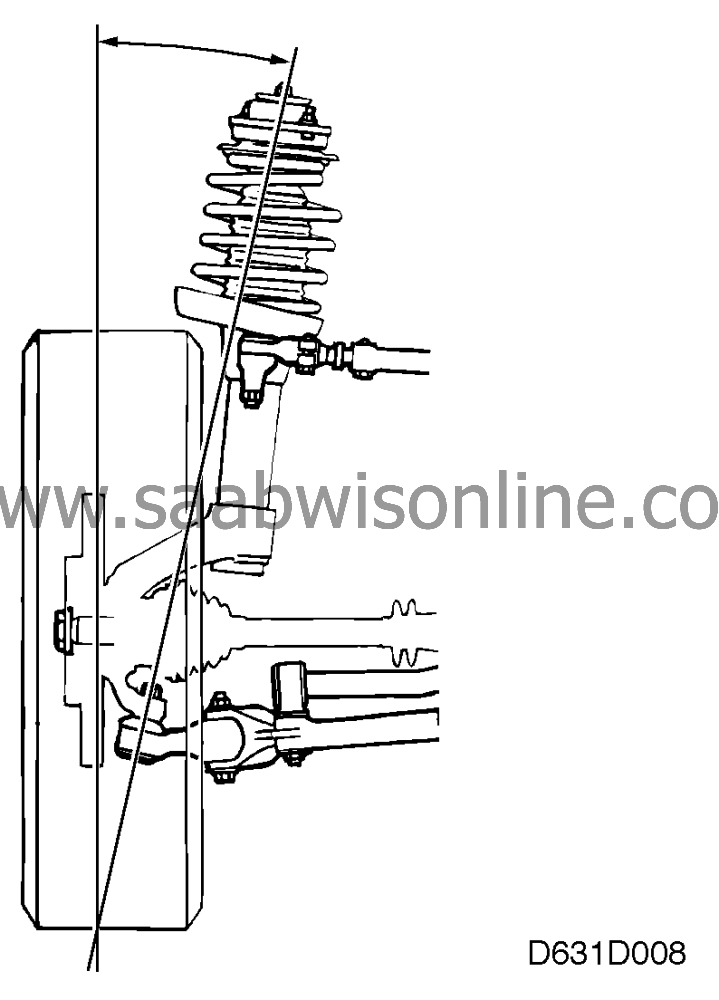
Swivel-pin inclination is the angle between the swivel axis (an imaginary line running through the centre of the ball bearing at the top of the MacPherson strut and the centre of the ball joint on the suspension arm) and the vertical. It is given in degrees.
| Steering angle |
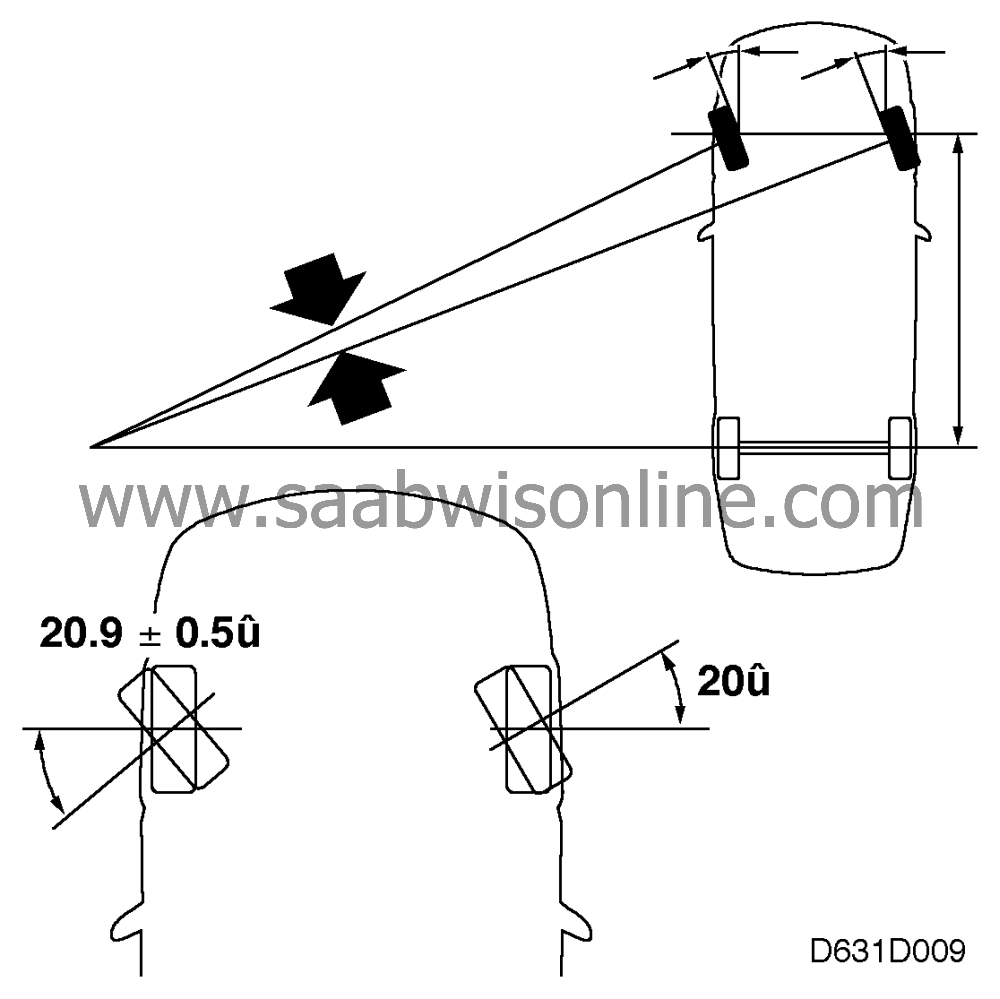
The ideal steering angle for perfect rolling of all wheels when cornering varies with the speed of the car and the tightness of the turn, owing to suspension movement and the deflection of the tyres.
Since the steering arms are turned slightly inwards in relation to the direction taken by the car, the angle of the inside wheel when cornering will be slightly greater than that of the outside wheel.

